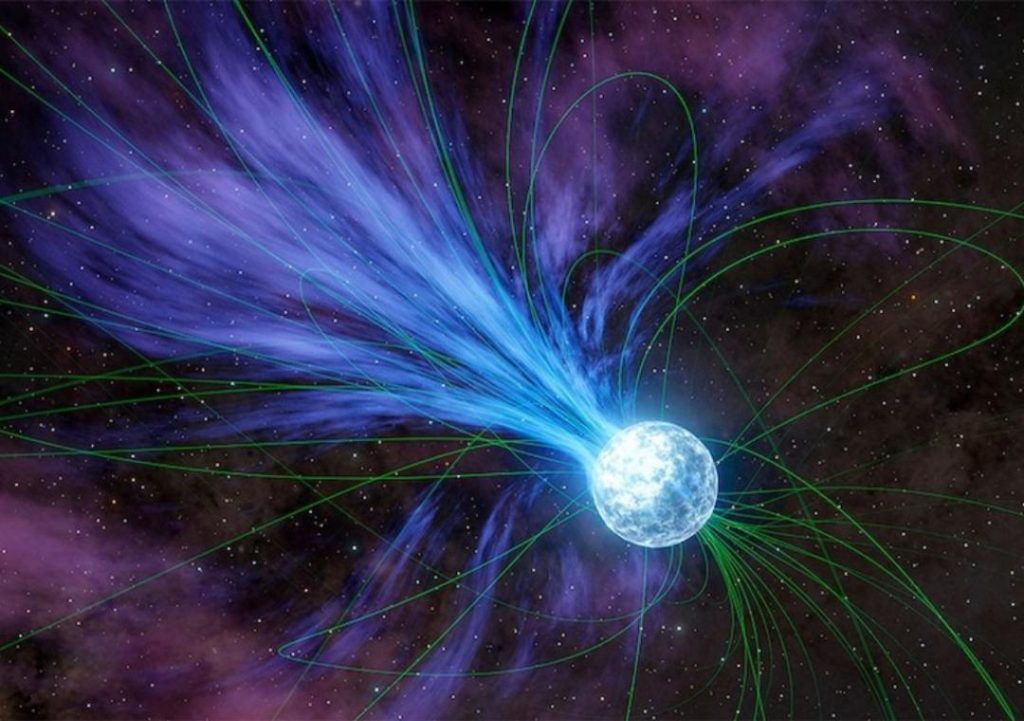
Gold & Platinum Created through Neutron Stars’ Explosions: Study
The origin of precious metals like gold and platinum has long been a topic of fascination for scientists and enthusiasts alike. For centuries, humans have been drawn to these valuable resources, using them in jewelry, currency, and other forms of adornment. But where did these metals come from in the first place? A recent study led by Columbia University student Anirudh Patel may have finally provided the answer.
According to the study, magnetars – highly magnetized neutron stars – played a crucial role in creating elements like gold and platinum in a cosmic event that occurred over 20 years ago. These magnetars exploded and released flares that contained the precious metals, which were then dispersed throughout the universe.
Magnetars are incredibly powerful objects, with magnetic fields that are trillions of times stronger than those found on Earth. They are also incredibly rare, with only a few dozen known to exist in the Milky Way galaxy. Despite their rarity, magnetars are responsible for some of the most powerful explosions in the universe, releasing enormous amounts of energy in the form of gamma rays and other forms of electromagnetic radiation.
The study, which was published in the journal Nature Astronomy, used data from NASA’s Fermi Gamma-Ray Space Telescope to analyze the properties of magnetars and their explosions. The researchers found that the explosions were caused by the build-up of magnetic energy in the magnetars, which eventually became unstable and released their energy in a catastrophic event.
The explosions themselves are incredibly powerful, releasing as much energy as a billion suns. They also occur relatively frequently, with magnetars exploding approximately once every decade in the Milky Way galaxy and annually across the observable universe.
So how did these explosions create gold and platinum? The answer lies in the process of nucleosynthesis, which is the creation of new atomic nuclei through the interaction of high-energy particles. During a magnetar explosion, the intense radiation and high-energy particles released by the explosion interact with the surrounding material, creating new atomic nuclei through a process called rapid neutron capture.
This process, also known as r-process nucleosynthesis, is responsible for the creation of many of the heaviest elements in the universe, including gold and platinum. The rapid neutron capture process creates these elements by adding neutrons to the atomic nuclei of lighter elements, effectively “building” the heavier elements from scratch.
The researchers used computer simulations to model the explosion and the subsequent creation of gold and platinum. They found that the explosions were capable of producing large amounts of these precious metals, which were then dispersed throughout the universe.
The study’s findings have significant implications for our understanding of the origin of precious metals. For centuries, humans have believed that gold and platinum were created through geological processes on Earth, such as the formation of the planet’s crust. However, the study suggests that a significant portion of these metals may have been created through cosmic events, such as magnetar explosions.
The study’s lead author, Anirudh Patel, stated that the findings were “a major breakthrough” in the field of astrophysics. “We’ve known for a long time that magnetars are incredibly powerful objects, but we didn’t realize just how powerful they were until now,” he said.
The discovery also has implications for the search for extraterrestrial life. If magnetars are capable of creating gold and platinum through their explosions, then it’s possible that these elements are present on other planets and moons in the universe. This could provide a new avenue for the search for extraterrestrial life, as the presence of these elements could be a sign of the presence of life itself.
In conclusion, the study led by Columbia University student Anirudh Patel has provided a new understanding of the origin of precious metals like gold and platinum. The findings suggest that magnetars, highly magnetized neutron stars, played a crucial role in creating these elements through their explosions. The study’s implications are significant, not only for our understanding of the universe but also for the search for extraterrestrial life.






